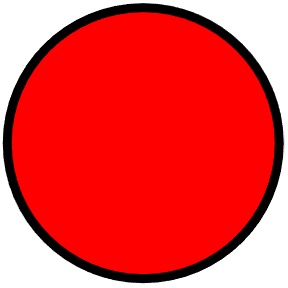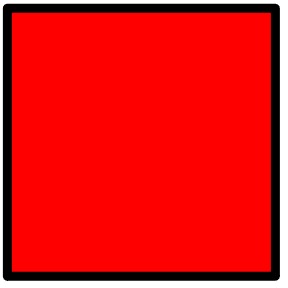Subsection 2.2.5 A Truth Table Definition of the Operator is equivalent to
Next we’ll define the operator is equivalent to, for which we’ll use the symbol ≡. (Notational aside: An alternative symbol is \(\leftrightarrow \text{.}\) So p\(\leftrightarrow \) q means the same thing as p ≡ q.)
Here is the truth table for is equivalent to:
| p | q | p ≡ q |
|---|---|---|
| T | T | T |
| T | F | F |
| F | T | F |
| F | F | T |
This one is pretty simple: “p ≡ q” is true exactly when p and q have the same truth values.
It’s important to note that “equivalent” and “identical” are different. The notion of equivalence that we want, and that we are capturing here, can be paraphrased as, “the same with respect to some particular purpose.” And the purpose we care about is determining truth values. For example, we’ll soon prove that and is commutative (in other words, it doesn’t matter what order the operands to it are given). So we’ll prove that the following two statements are equivalent (in the logical sense):
r ∧ s s ∧ r
Not identical, but equivalent.
Consider these two English sentences:
The Morning Star is about the same size as the Earth.
The Evening Star is about the same size as the Earth.
Astronomers now know that the Morning Star and the Evening Star refer to the same celestial object (namely Venus, which isn’t actually a star at all). So these two sentences, while different, are equivalent. Either they are both true or they are both false.
Exercises Exercises
Exercise Group.
Recall the truth table for is equivalent to that we just presented:
| p | q | p ≡ q |
|---|---|---|
| T | T | T |
| T | F | F |
| F | T | F |
| F | F | T |
Let p correspond to the claim, “The circle is red.”
Let q correspond to the claim, “The square is blue.”
Consider the claim, “The circle is red is equivalent to the square is blue.”
1.
(Part 1) Consider this situation:


Which row of the is equivalent to truth table tells us whether our claim, “The circle is red is equivalent to the square is blue,” is true?
Line 1 and the claim is true.
Line 2 and the claim is false.
Line 3 and the claim is false.
Line 4 and the claim is true.
2.
(Part 2) Consider this situation:


Which row of the is equivalent to truth table tells us whether our claim, “The circle is red is equivalent to the square is blue,” is true?
Line 1 and the claim is true.
Line 2 and the claim is false.
Line 3 and the claim is false.
Line 4 and the claim is true.
2.
Let p correspond to the claim: x + 2 = 7
Let q correspond to the claim: 7 = 2 + x
Assume the standard rules of algebra. True or false: p ≡ q
